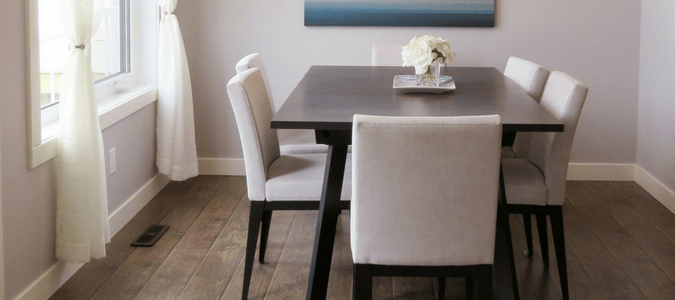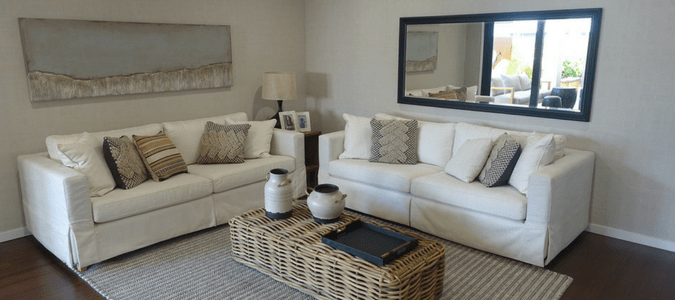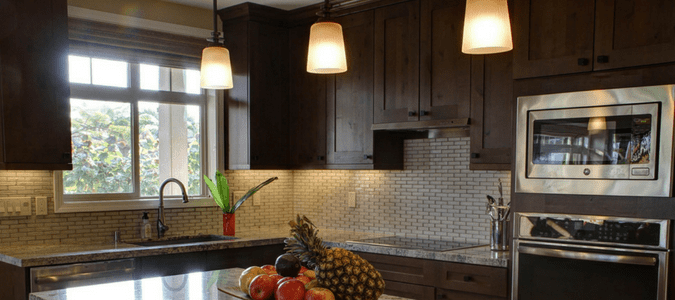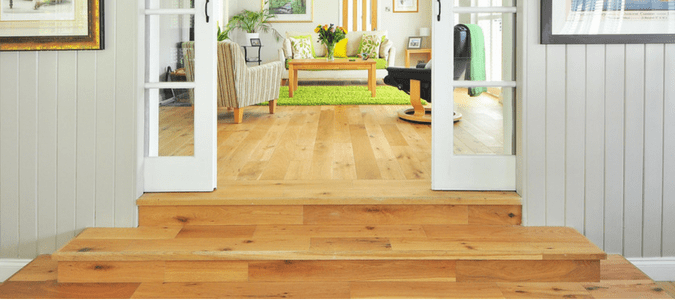
When the sun is out and temperatures are brutally high, homeowners know that it’s critical to have a working air conditioner. Without a properly functioning AC, when summer temperatures rise into the 90s and 100s, you are not just uncomfortable indoors—it can actually be dangerous for humans and household pets, not to mention potentially harmful to your appliances and electronics. So what should you do if your AC suddenly stops working?
When your AC isn’t functioning well—or at all—it may be due to a problem that requires an experienced professional to fix. Certain common AC issues, such as a broken capacitor, are risky for inexperienced DIYers to try handling themselves; even cleaning your own AC condenser coils carries the risk of shorting out your unit. There are certain things, however, that the average homeowner can do to troubleshoot a problem with an air conditioner and resolve an issue on their own. If there is no air coming out of vents in one room only, for example, it’s good to know what might be causing the issue, so you can make an educated decision about whether to call in the pros or try taking a more DIY approach.

No Air Coming Out Of Vents In One Room? Troubleshooting Tips
The problem with a malfunctioning AC unit is that you probably won’t know about the problem until it’s hot outside. When you turn on the AC to cool things down indoors, only to find it’s not working properly, you need it fixed as soon as possible! The problem may be due to a broken component in your AC system, but it also could be the result of improper maintenance. Maintaining your AC is essential to keeping it in proper working order. Keep in mind that twice-yearly checks by an HVAC professional are an inexpensive and highly effective way to prevent common problems from occurring. Being proactive about your air conditioner will save you money in the long run.
If your AC is not working properly, there are a few things to check immediately, before you even begin to troubleshoot your particular issue. The following advice applies if your AC is not working at all. These tips are also relevant if your AC is running but the air coming out of the vents isn’t cool, if there’s no air coming out of vents in one room or if you’re experiencing low air flow through the vents in your house. In short, no matter what specific AC problem you might be having, you should always make sure of the following first:
- Double check to confirm that the AC is turned on at the thermostat, and that it is switched to “cool” rather than to “fan” or “heat.” This may sound basic, but it’s easy to make the mistake of thinking your AC is malfunctioning when it’s simply switched off or to the wrong setting!
- Check the thermostat settings to ensure the AC is set to a temperature that is lower than the ambient temperature inside the house. If you may have mistakenly set your system to a higher temperature, your system won’t know to begin cooling the space.
- Make sure all windows and doors to the outside are closed. Even just one or two open windows can bring in enough heat to result in your AC struggling to cool your indoor space.
- Clean or replace the filter, if needed. A dirty AC filter can greatly restrict airflow, which can have a big impact on your AC’s ability to cool your home efficiently. Severely dirty air filters can even cause your unit’s coils to freeze over.
Assuming your AC is turned on and is set to “cool” at a temperature lower than the ambient temperature in your home, all doors and windows are closed and your AC filters are clean and in good working order, it’s time to explore the possible reasons why you no air is coming out of vents in one room in your house.
If there is no air coming out of the vents in only one room of the house, make sure the registers in that room are fully open and are not blocked by furniture or any other obstruction. If the registers are open and clear of any obstructions, and if a bit of cold air is coming out but only very weakly, it may be that this particular room is farthest away from the AC unit. The rooms closest to the unit will receive the strongest and coldest air flow, while those farthest away will unfortunately get the weakest air flow. One way to balance out the air flow to all the rooms in your house is to close the vents in the cooler rooms partway. This forces more air to the warmer rooms that aren’t receiving as much cold air through the vents.
Another possibility is that something is blocking either the register from the inside or the ductwork that leads to the register. You can try using a screwdriver to remove the register yourself and peer inside, but if you can’t see anything obviously blocking the flow of air, you’ll need to either inspect the ductwork yourself—which often requires a trip up to the attic—or, better yet, hire a professional to conduct the inspection for you. A professional knows how HVAC systems work and can snake a camera into your ductwork to find any spots where there is a blockage or where the ductwork has collapsed, preventing the flow of air into the rooms of your house.

AC Vent Not Blowing Air In One Room: What To Do
To prevent issues with air flow through your AC ducts into the rooms of your home, be sure to never store items in your attic on top of any ductwork. Avoid stacking boxes or other items near ductwork, either, as they could fall onto the ducts and crush them. Always make sure your AC registers are open, unless you choose to close the registers in some rooms partway in order to push more air to other rooms that are too far away from the AC unit to receive enough air flow.
Again, regular AC maintenance is one of the best ways to prevent problems like air conditioner vents not blowing in one room of your house. A licensed and experienced HVAC professional can inspect all the ductwork and registers of your air conditioning system on a regular basis, ensuring the entire system is in proper working order.

Low Air Flow Through Vents In House And Other AC Problems
The most common cause of low air flow through the vents in your home is blocked or dirty AC filters. When your filters are blocked by furniture or clogged with dirt, dust, hair and other debris, it decreases the efficiency of your entire air conditioning system, greatly reducing its ability to cool your home effectively. Be sure to keep the area around your AC filters clear of furniture and anything else that might block the flow of air, and be sure to clean or change your AC filters once a month. If you have pets that shed lots of hair, you may need to switch out your filters even more often. When you clean or change your AC filters, be sure to vacuum the metal grates closing the filters in at the same time.
Another way to prevent common home cooling problems is to clean your AC registers on a regular basis. Also known as vents, registers are the metal grates that let air flow from the AC ductwork into the rooms of your home. Vacuum these grates once a month, or anytime you see that dust has accumulated on them.
If your AC is running but is not cooling the house properly, you could be the victim of a variety of issues. First, keep in mind that when it’s extremely hot outside, you might be tempted to keep lowering the desired indoor temperature at the thermostat —but your AC will have a hard time cooling your home beyond about 25 degrees cooler than it is outside. For example, if it’s 100 degrees outside, don’t expect your AC to cool your home to 65; the lowest it might be able to achieve is about 75 degrees indoors.
If you’ve set your thermostat within this range and it’s still not cooling properly, there are several other possible reasons why you might be having problems keeping your home cool. Your unit may be low on freon, which could be due to a leak in the system, improper coolant charging when the unit was installed or simply the age of the unit. Regardless of the reason, the freon will need to be topped off by an HVAC professional, who can also diagnose any underlying problem that may have led to the low freon level in the first place.
Another possibility is that there’s a problem with your AC condensing unit, which is the big metal box located outside your home that has grates on the top and sides and a large fan inside. If there are weeds, vines or other plants growing around the condenser, clear them away, as these can restrict air flow to the unit, which then decreases its ability to function properly.
You should also peek inside the condenser to see whether ice has formed on the coils. If you do see ice, or frost, that’s a potentially big issue with a variety of possible causes. You can melt the ice yourself by turning off your AC and switching the fan from “Auto” to “On”; that should melt the ice quickly, within just a few hours. The underlying problem, however, will still need to be resolved. Ice forming on the coils is often due to dirty coils, and cleaning them can be a tricky process that may be best left up to a professional. Fortunately, hiring an HVAC professional to clean your condenser coils is typically not very expensive, and it’s worth the low cost to keep your AC in working order.
If your AC isn’t working at all, the problem could also be with your condenser, and it may be something small or something major. First, if the fan at the top of your condenser unit isn’t spinning, the problem might be as simple as a tripped circuit breaker. To check this, try resetting the AC breaker in your electrical panel by turning it off and then back on again.
If none of these suggestions resolves the issue, your AC might have a broken capacitor. Summer heat is a common culprit in broken capacitors. This is one reason many AC units in North America are installed on the north side of the house to minimize direct sunlight hitting the unit. When the heat of direct summer sunlight mixes with the heat of the condensing unit’s motor, it can spell trouble for various components of the AC. If you do have a broken capacitor, it’s best to hire a professional to fix the issue due to the risk of electric shock as well as the potential for further damage to the condenser unit.

How To Increase Airflow To One Room
As we have already mentioned, the simplest way to increase airflow to one room in your home is by closing the registers, or vents, in other rooms, either completely or partway. This will effectively force more air to flow through the ducts to the rooms that have fully open registers. Also, always be sure that registers are not blocked, either by furniture or any other items. This is particularly important for registers that are mounted in the floor instead of the wall or ceiling.
AC Not Working? ABC Can Help
Whether you need an AC repair, installation or maintenance plan, ABC can get someone working at your home— fast. Our licensed specialists are well-versed in every type of AC problem; we can troubleshoot any issues you’re having and determine the best resolution at an affordable price.
Remember, regular AC maintenance is an important part of keeping your air conditioner running at peak performance. If you have a home warranty, it’s essential to maintain your AC in order to stay in compliance with the terms of your warranty. ABC’s experienced HVAC professionals can perform all the items in a manufacturer’s air conditioner maintenance checklist to keep your system in prime condition. Regular inspections also help prevent major problems from developing unexpectedly. Our routine maintenance system checks include cleaning condenser units, clearing away plants and other debris if needed, checking for freon leaks, inspecting ductwork and more. Best of all, setting up an affordable maintenance plan will save you money in the long run by keeping your AC running efficiently and avoiding the need for major repairs due to lack of upkeep.
